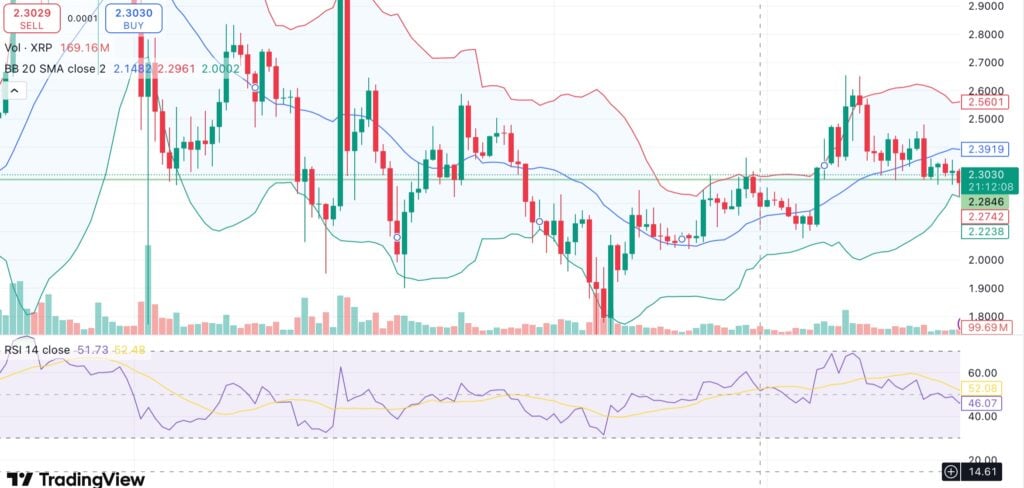Ripple co-founder Chris Larsen has revealed that the company is not behind the fundraising for the controversial “Change the Code” campaign. The initiative has set out to work with Greenpeace to pressure the Bitcoin community to dump the Energy Intensive Proof of Work (POW) consensus model.
Larsen added that he supported the campaign personally, not as a corporate action by Ripple. He also cited progress on Bitcoin’s energy profile. He mentioned research from the University of Cambridge, noting that today’s mining uses significant increments of renewable energy, including nuclear, wind and hydro. Furthermore, more flare gas energy than otherwise going to waste is used to power mining operations.
Nevertheless, the campaign continues to drive criticism. The initiative is considered anti-Bitcoin by many in the Bitcoin community, and some accused it of planting seeds of doubt within the Bitcoin network and pushing it as a way to promote XRP instead.
When I funded the “Change Code” campaign in early 2023, my goal was to see if there was a way to turn Bitcoin into an accelerator for direct air capture. The campaign didn’t work and it’s fine! Note – Ripple did not fund this campaign.
…Bitcoin’s energy transition at https://t.co/qicaddtzdu
-Chris Larsen (@Chrislarsensf) May 28, 2025
Ripple’s iconic donation causes controversy
Ripple’s latest donation to the Bitcoin community has sparked both praise and criticism. The artwork, once used as the ultimate in Bitcoin energy consumption, was officially handed over at the 2025 Bitcoin Conference in Las Vegas. It is currently on display at the Bitcoin Museum in Nashville.
Ripple CEO Brad Garlinghouse called the gesture an olive branch. According to him, Bitcoin acts as a resilient system, advises the crypto industry to adhere to common goals, including innovation, regulatory clarity and financial inclusion. Garlinghouse said he hopes the donation will remind you that different communities in the industry have a lot in common.
Although there have been differences of opinion in the past, Garlinghouse said Ripple’s current position is not to compete, but to work with the industry. Ripple’s top executives have publicly denied accusations that the company had lobbyed against having a strategic Bitcoin Reserve (SBR) in the US. Ripple also says it supports a multi-asset approach to the nation’s crypto-protected structure.
Not everyone shares feelings. Vaneck Matthew Sigel’s digital assets director condemned the move. Sigel rejected the sculpture and instead funded Ripple for Greenpeace’s anti-Bitcoin efforts and demanded a formal apology to ask him at X, “Is that your apology?”
Some criticize popular XRP lawyer John Deaton for attending Bitcoin 2025 and call him the “XRP Guy.” Ripple CTO David Schwartz argued in Bitcoin Maximalists that XRP is not centralized as it has no publisher and remains decentralized even under the influence of Ripple.
Despite the rise in Vivopower, XRP prices stagnate
The market response to Ripple’s outreach is slippery. Despite recent developments, XRP traded at $2.29, down more than 5% for a week. However, I rarely moved the XRP. Last week, the tokens traded between $2.24 and $2.47 and appeared to be consolidated. Trading volume increased 28% to $2.63 billion.
Additionally, the on-chain volume of XRP rose sharply, increasing by 21.7% on the last day. Coinglass data also shows that the amount of derivatives rose 20.2% to $3.95 billion, while open interest fell 0.95% to $4.7 billion, indicating mixed sentiment among leveraged traders.
Technical indicators lack short-term momentum. The relative strength index (RSI) is 46 in the neutral region. Although the 100- and 200-day SMA exceeds current prices, the 10- and 30-day EMA and SMA are all flash sales signals. Rally above $2.40 could send the exchange rate to $2.60, but a decrease below $2.24 could lead to $2.10.

Source: Trading View


